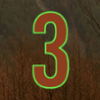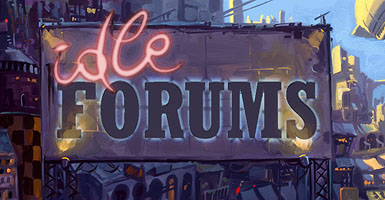-
Content count
34 -
Joined
-
Last visited
About Persistence of 3
-
Rank
Advanced Member
Recent Profile Visitors
-

Twin Peaks Rewatch 54: Season Three Wrap-up, Final Thoughts, and Mailbag
Persistence of 3 replied to Jake's topic in Twin Peaks Rewatch Episodes
Interesting that as Frost descibes himself as a Jungian and then goes on to talk about Cooper's shadow self he refers to Dougie and not Mr. C.. -

Twin Peaks Rewatch 52/53: The Return, Parts 17 and 18
Persistence of 3 replied to Jake's topic in Twin Peaks Rewatch Episodes
Not to be missed... https://vimeo.com/251269227 -

Twin Peaks Rewatch 52/53: The Return, Parts 17 and 18
Persistence of 3 replied to Jake's topic in Twin Peaks Rewatch Episodes
So Dupar's —a great coffee shop in the Studio City nieghborhood of Los Angeles is closing next month. Dupar's is famous as one of Lynch's haunts (I saw him there once with Issabella Rossillin in the early 90s). It's also said to be a location where Lynch and Frost conjoured up the narrative for Twin Peaks. Dupar's is famous for thier pies and donuts. It was said they were the ones who supplied both during the original TV show's prodcution. I recalled that Dupar's got a shout-out in the "Welcome To Twin Peaks" Access Guide that was published back in the day. Feeling sentimental and wanting to confirm my recollection, I pulled out my copy for the first time in forever. Sure enough the reference is there. Guess what else is there? Page: 109, the "Proposed Prison Facility". It reads: "A pet project of nobody really knows who, the proposed maximum security prison to be build on an unspecified sit (sic) is annually tabled, shelved or otherwise shot down by a majority of town council members. The firm DLMF Creations, architects for the project, has submitted five concepts but none have been accepted and paid for. Pictured here is the latest. Sheriff Truman remains on the fence about the whole thing but Ben Horne recognizes a business opportunity when he sees one. The fight of this may be almost as bloody as the Ghostwood Development Project" Huh. Guess I'm going to have to read through that book again to see what other seeds of Season Three, The Return, Limited Series Event that also came to fruition! -

Twin Peaks Rewatch 52/53: The Return, Parts 17 and 18
Persistence of 3 replied to Jake's topic in Twin Peaks Rewatch Episodes
Wishful thinking? There was always hope for a season 3 despite the shabby reality of the ratings. ABC didn't put that title card in the show, the showrunners did. Perhaps there was hope that 'putting it out there' would result in a groundswell that might change the network's mind. It was a groundswell that got those final two episodes aired in the first place. Once ABC moved the show from Thursdays (where it had been struggling) to Saturdays the ratings tanked entirely. They stopped running episodes in April with only two left. The reamaining faithful viewers were PISSED. A massive letter-writing campagn ensued. The newtwork relented and aired (dumped) the final two episodes in June on one night. The television "season" was over in May. It was, litererally the least they could do for the show next to not airing it at all. After all they'd already paid for it. That said, the production date on the show would have likely been in February or March, post would have wrapped soon after. That's when "To Be Continued" would have been put on there —and with Lynch's blessing one assumes as the final hour was his episode. It probably got removed by Lynch later for the same reasons. Just a guess. -

Twin Peaks Rewatch 52/53: The Return, Parts 17 and 18
Persistence of 3 replied to Jake's topic in Twin Peaks Rewatch Episodes
For what its worth Mark Frost retweeted that Twitter post. Casting Jeremy Davies as the other henchmen —in this light— is a great bit of misdirection. Since he's the more recognizable of the two our attention is apt to be more on him thus allowing Lynch to hide Ronnie Blevens in plain sight. -

Twin Peaks Rewatch 52/53: The Return, Parts 17 and 18
Persistence of 3 replied to Jake's topic in Twin Peaks Rewatch Episodes
I'm in the midst of a rewatch of 3 right now. Day one I did six episodes, days two and three were 3 episodes in a sitting. I'm finding that it's pretty tight the second time around. One has a greater sense of what takes place in a story day (2-3 episodes seem to cover a story day compared to the original series which was strictly one story day per episode). Knowing what's going to happen and which characters are recurring and which are incidental can't help but effect the way one takes in the story. The overall effect is leaner and not as rambling than my initial impressions. I'd say a second veiwing is essential to appreciate what's going on. Already halfway through and really my only nagging question at this point is who exactly is claiming to be Phillip Jefferies when Bad Coop makes the call from the skanky hotel room? Was that ever explained? I don't think it was so in that case my suspicions lean heavily towards Albert. -

Twin Peaks Rewatch 52/53: The Return, Parts 17 and 18
Persistence of 3 replied to Jake's topic in Twin Peaks Rewatch Episodes
It can be problematic presenting a case for the lapel pin given that we're talking about a franchise which capitalized on a production error to create Killer Bob. Mr Lynch has given us precident after all. That said, I think this is different. At some point in their discussions Lynch and Frost had to have realized they couldn't tell the story they wished to tell unless Cooper's lapel pin disappears. So they dispensed with it at the most convenient time. I'd go so far as to suggest the business with his shoes left behind —despite the ubiquitous talk of shoes in the original run— was a big misdirect. Look there not here. Later, Dougie/Coop seems to understand perfectly well that his pin is missing and appears to be telling us that each time he reaches for a lawman's badge. Once it was established that there would have to be scences establishing the pin and scenes without then it would fall to the costume department to monitor where they were in the story and how to depict Cooper. Yes, continuity errors happen. This seems like something intentional, like leaving the bat symbol off of Batman's cosutme. It's kinda conspicious when you think about it. Of course one could wonder whether or not the opening black and white scene with Cooper and the Giant was scripted for the opening or whether it was something that was found later in the edititng room. -

Twin Peaks Rewatch 52/53: The Return, Parts 17 and 18
Persistence of 3 replied to Jake's topic in Twin Peaks Rewatch Episodes
An observation about Cooper. In the original series as well as FWWM when we see him in his black suit he's always wearing his FBI lapel pin. This isn't always so in the Return. In fact, the only time he wears his lapel pin are during the Lodge scenes prior to his exit through the #3 socket. So it wasn't just his shoes that didn't pass through to the other side. As an imperative of the narrative this makes good sense since Jade, then the casino operators and everyone else down the line would have noticed and reacted accordingly. Hookers and gambling operations would certainly take exception to a federal agent. So it goes to pass, through the remainder of the story Cooper no longer wears his lapel pin. Yet, watch part one again. When we see Cooper recieving the Giant/Fireman's clues, Cooper isn't wearing the pin. I think this pretty much establishes how much the story is being told out of sequence. The Cooper getting these clues is the Cooper from the 'end' of the story. -

Twin Peaks Rewatch 52/53: The Return, Parts 17 and 18
Persistence of 3 replied to Jake's topic in Twin Peaks Rewatch Episodes
Defintitely at the time. Wasn't aware they were scrubbed for 'the complete mystery' set. -

Twin Peaks Rewatch 52/53: The Return, Parts 17 and 18
Persistence of 3 replied to Jake's topic in Twin Peaks Rewatch Episodes
Both season 1 and 2 ended with a card that read 'TO BE CONTINUED'. Season 3 did not. Plus, the aforementioned absence of electrical sound over the final Lunch/Frost logo suggests to me that its done. -

Twin Peaks Rewatch 52/53: The Return, Parts 17 and 18
Persistence of 3 replied to Jake's topic in Twin Peaks Rewatch Episodes
Well it certainly could explain why the Lynch/Frost logo at the very end appeared without the electricity sound. -

Twin Peaks Rewatch 51: The Return, Part 16
Persistence of 3 replied to Jake's topic in Twin Peaks Rewatch Episodes
Those were great moments. He treats Mike like a cohort. When Cooper plucks his hair and asks about the seed, it pretty much demonstrates how very much aware of what's going on and how things work. -

Twin Peaks Rewatch 51: The Return, Part 16
Persistence of 3 replied to Jake's topic in Twin Peaks Rewatch Episodes
I think the reason that Coop got out of his hospital bed, raring to go (aside from that being a call-back to Coop getting up from his hospital bed after being shot in season 2) is because he's got a schedule and a plan to fulfill. It seems as though all that time in the lodge(s) wasn't spent sitting in a black chair waiting but rather taking meetings with Mike and the Giant and any other entitity available to give Cooper the lowdown to help him understand what was necessary to make things right at the soonest available opportunity. It just so happened that the next opportunity was 25 years later. Twin Peaks, The Return pretty much opens with Cooper in conference with The Giant, who, in his eliptical way, was pretty much explaining to Cooper what needed to be done. Mike seemed to be there every step of the way offering all the assistance that he could. It all may have made little sense to the viewer but it made perfect resonant sense to Coop and his subsequent actions once he was (finally) awake described someone fully briefed and ready to go. -

Twin Peaks Rewatch 51: The Return, Part 16
Persistence of 3 replied to Jake's topic in Twin Peaks Rewatch Episodes
So, just spitballing here but is it possible that Janey-E is really Dianne? I wish I could connect those dots in a clear way but I can't. That said, we're taking the word of Tulpa-Dianne that she's her sister when she may be using the term metaphorically. -

Twin Peaks Rewatch 49: The Return, Part 14
Persistence of 3 replied to Jake's topic in Twin Peaks Rewatch Episodes
It appears as though we've gone a full cycle with the colors on the show. Roughly the first third of the season the dominant color note was yellow (Jade's jeep, Janey-E's phone, The Giant's orb, etc.). The second third featured the color red (Major Brigg's chair, Cherry Pie, red shoes, etc.). Episode 14 appears to have announced the final green phase in the sequence when Dianne stepped out dressed all in green —usually her attire is a wild combo of these three colors— and sat in a green chair. And let's not overlook hand in the green glove. I don't think it's possible to ascribe literal meaning to the colors but ever since the recurring motif of the traffic light at Sparkwood and 21 of season 1, Lynch has been promoting the idea that moments in time are transitioning from one phase to another analogus to the light and color of a traffic light.


